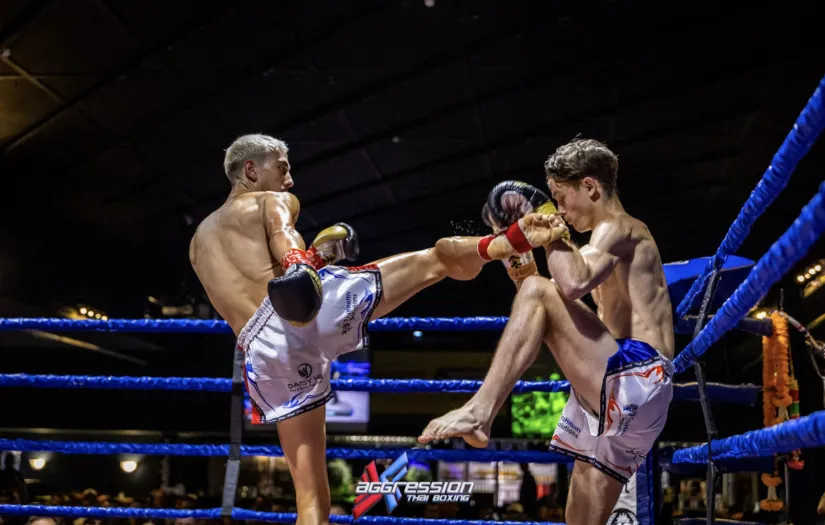
MMA Strength Training: Plyometrics for Enhanced Performance
MMA Strength Training: Plyometrics for Enhanced Performance
Are you an MMA fighter looking to enhance your performance and gain a competitive edge? Plyometric training could be the key to unlocking your full potential in the octagon. This article will explore how plyometrics can improve your explosive power, agility, and overall strength. We'll cover effective exercises, safety measures, and ways to integrate plyometrics into your existing training routine. By incorporating these dynamic movements, you'll be better equipped to handle the physical demands of competition, prevent overtraining, and maintain optimal body fat levels for your weight class.
Mastering Plyometric Fundamentals for MMA Success

Mastering plyometric fundamentals is crucial for MMA success. This section explores the science behind plyometric movements and their benefits in mixed martial arts. Understanding these concepts helps fighters optimize their training, enhancing explosive power for techniques like the bench press and improving strength-camp flexibility and sprint performance.
Understand the Science Behind Plyometric Movements
Plyometric movements utilize the stretch-shortening cycle, a natural mechanism in muscles that enhances power output. During a strength-camp, fighters can leverage this principle to improve explosive strength in key areas such as the chin and abdomen. The rapid stretching of muscles followed by an immediate contraction allows for greater force production, crucial for MMA techniques.
Understanding the science behind plyometrics and sports strength and conditioning provides valuable information for setting realistic training goals. By manipulating variables such as intensity, volume, and rest periods, fighters can optimize their plyometric workouts to suit their specific needs. This knowledge enables athletes to design effective programs that enhance performance while minimizing the risk of overtraining or injury.
Identify the Benefits of Plyometrics in Mixed Martial Arts
Plyometrics offer significant benefits for mixed martial artists, enhancing their explosive power and speed. These exercises improve the rate of force development, allowing fighters to generate maximum power in minimal time. By incorporating plyometric movements into their training, athletes can increase their ability to execute rapid strikes, takedowns, and defensive maneuvers with greater efficiency.
Progressive overload in plyometric training can lead to improved overall athletic performance. As fighters gradually increase the intensity and complexity of their plyometric exercises, they develop greater muscle mass and power. This adaptability translates to enhanced motion in the cage, enabling athletes to maintain explosiveness throughout a fight. Incorporating tools like dumbbells in plyometric routines can further challenge the body and promote continuous improvement.
Selecting Effective Plyometric Exercises for Fighters

Selecting effective plyometric exercises is crucial for enhancing MMA performance. This section focuses on choosing exercises that boost explosive power and incorporate movements specific to MMA techniques. By targeting key muscle groups and joint actions, fighters can improve force production in techniques like the deadlift and enhance overall performance using bodyweight and machine-based exercises.
Choose Exercises That Enhance Explosive Power
Effective plyometric exercises for combat sports like MMA and karate focus on developing explosive power in key areas. Fighters should prioritize exercises that target the hands, legs, and core, such as medicine ball slams, box jumps, and plyometric push-ups. These movements simulate the rapid force production required in striking and grappling techniques, enhancing overall performance in the cage.
The frequency of plyometric training in an MMA strength training program should be carefully balanced to avoid overtraining. Typically, incorporating plyometric exercises 2-3 times per week allows for adequate recovery while still promoting adaptations. By strategically implementing these explosive movements, fighters can improve their power output and reaction time, giving them a competitive edge in high-intensity combat situations.
Incorporate Movements Specific to MMA Techniques
Effective plyometric training for MMA incorporates movements that mimic specific techniques used in the sport. Fighters can enhance their grappling skills by performing explosive medicine ball throws that simulate clinch work and takedowns. Plyometric exercises targeting the elbow, such as rapid-fire push-ups with elbow extensions, can improve striking power and speed in close-range combat situations.
Integrating sport-specific plyometrics into MMA training requires creative use of equipment. Tire flips combined with explosive jumps can replicate the dynamic force needed for takedowns and ground transitions. Recovery is essential in high-intensity plyometric training, and fighters should incorporate regular massage sessions to maintain muscle elasticity and prevent injury. This comprehensive approach ensures that plyometric exercises directly translate to improved performance in the cage.
Designing a Plyometric Training Plan for Peak Performance

Designing an effective plyometric training plan is crucial for MMA fighters aiming to enhance their performance. This section explores how to schedule plyometric workouts within a training cycle and balance intensity with recovery. By focusing on core stability, muscle adaptation, and stress management, fighters can optimize their training in the United States and beyond for peak performance.
Schedule Plyometric Workouts Within Your Training Cycle
Effective scheduling of plyometric workouts within an MMA training cycle requires careful consideration of training volume and intensity. Fighters should aim to perform 2-3 plyometric sessions per week, focusing on lower reps and higher speed to maximize explosive power development. Sports medicine research suggests that integrating plyometrics into strength training routines, such as pairing box jumps with the overhead press, can enhance overall athletic performance.
Periodization plays a crucial role in optimizing plyometric training for MMA athletes. By alternating between high-intensity and recovery phases, fighters can maximize adaptation while minimizing the risk of overtraining. Understanding exercise physiology helps coaches and athletes design progressive plyometric programs that align with the fighter's competitive schedule, ensuring peak performance when it matters most.
Balance Intensity and Recovery for Optimal Results
Balancing intensity and recovery in plyometric training is crucial for MMA fighters to achieve optimal results. High-intensity exercises like medicine ball throws and sandbag slams should be alternated with lower-impact activities such as swimming to promote muscle adaptation and prevent overtraining. This approach allows for sufficient recovery time between intense sessions, ensuring that fighters can maintain the explosive power necessary for rapid muscle contractions during competition.
Effective recovery strategies are essential for maximizing the benefits of plyometric training. Fighters should incorporate adequate rest periods between sets and sessions, allowing for complete muscle recovery and adaptation. Monitoring fatigue levels and adjusting training intensity accordingly helps prevent burnout and reduces the risk of injury. By striking the right balance between intensity and recovery, MMA athletes can consistently improve their performance while maintaining long-term health and sustainability in their training regimen.
Implementing Safety Measures During Plyometric Training

Implementing safety measures during plyometric training is crucial for MMA fighters. Proper warm-up techniques and correct form are essential to prevent injuries and maximize the benefits of these explosive exercises. By focusing on range of motion, rotation, and proper technique with tools like barbells, athletes can protect their hearts and joints while enhancing performance in the art of mixed martial arts.
Warm Up Properly to Prevent Injuries
Proper warm-up routines are essential for MMA fighters engaging in plyometric training. A comprehensive warm-up should include dynamic stretching exercises that target key muscle groups used in boxing and other martial arts techniques. This helps increase blood flow, improve flexibility, and prepare the body for the explosive movements involved in plyometrics, reducing the risk of knee and other joint injuries.
Incorporating agility drills and light weight exercises into the warm-up routine can further enhance preparation for plyometric training. These exercises help activate the nervous system and improve coordination, crucial for the high-intensity movements performed in the gym. By gradually increasing the intensity of the warm-up, fighters can safely transition into more demanding plyometric exercises, ensuring optimal performance and minimizing the risk of injury.
Use Correct Form and Technique in Each Exercise
Maintaining correct form and technique during plyometric exercises is crucial for MMA fighters to maximize performance and prevent injuries. When executing movements like the clean and jerk, athletes must focus on proper foot placement and body alignment to generate optimal velocity. Coaches should emphasize the importance of controlled landings and smooth transitions to reduce stress on joints and maintain a steady heart rate throughout the workout.
Incorporating tools like kettlebells in plyometric training requires careful attention to technique. Fighters should practice proper grip and swing mechanics to ensure effective power transfer and minimize the risk of strain. By prioritizing form over speed or weight, athletes can gradually increase the intensity of their workouts while maintaining safety and efficiency in their movements.
Progressing Plyometric Difficulty to Boost Strength

Progressing plyometric difficulty is crucial for MMA fighters to boost strength and enhance performance. This section explores how to gradually increase exercise complexity and monitor improvements to adjust training accordingly. By focusing on sport-specific movements that target the arms and improve body composition, athletes can optimize their plyometric routines. Proper sleep and recovery, along with tools like jump ropes, play vital roles in this progression.
Increase Exercise Complexity Gradually
Gradual progression in plyometric exercise complexity is crucial for MMA fighters to enhance their strength and power. As athletes develop their quadriceps strength through basic movements, coaches can introduce more challenging exercises that increase volume and intensity. This progression allows for proper adaptation and reduces the risk of overtraining or dehydration, which can negatively impact performance.
Coaches should closely monitor athletes' feedback and adjust the training program accordingly. By incrementally increasing the difficulty of plyometric exercises, fighters can continuously challenge their bodies and improve their explosive power. Proper hydration with water during these progressively complex workouts is essential to maintain performance and prevent fatigue, ensuring optimal results from the plyometric training regimen.
Monitor Improvements and Adjust Training Accordingly
Monitoring improvements in plyometric performance is crucial for MMA athletes, especially those focusing on judo and takedown techniques. Coaches should regularly assess key performance indicators such as jump height, ground reaction force, and power output to track progress. By analyzing these metrics, trainers can identify areas for improvement and adjust the plyometric stimulus accordingly, ensuring continued growth in explosive strength.
Exercise physiology principles guide the adjustment of plyometric training programs for MMA fighters. As athletes demonstrate increased proficiency in basic movements, coaches can introduce more complex exercises that challenge their neuromuscular system. This progressive overload approach, combined with regular performance assessments, allows for optimal adaptation and reduces the risk of plateaus in takedown power and overall athletic performance.
Combining Plyometrics With Other Strength Training Methods

Combining plyometrics with other strength training methods enhances MMA performance. This section explores integrating plyometrics with weightlifting routines, focusing on exercises like the snatch to improve explosive power and skill. It also discusses how plyometric drills can boost conditioning, addressing lactic acid buildup and minimizing injury risk while targeting the thorax for overall athletic development.
Integrate Plyometrics With Weightlifting Routines
Integrating plyometrics with weightlifting routines enhances MMA performance by combining explosive movements with traditional strength exercises. Fighters can incorporate plyometric drills between sets of compound lifts like the squat or clean and press, maximizing skeletal muscle adaptations. This approach allows athletes to develop both strength and power within a single training session, optimizing their time and effort.
Interval training principles can be applied to plyometric-weightlifting combinations, creating high-intensity workouts that improve cardiovascular fitness and power endurance. For example, alternating 30 seconds of box jumps with 30 seconds of weighted squats for several minutes challenges the entire body and mimics the dynamic nature of MMA competition. This integrated approach ensures that fighters develop the explosive power and muscular endurance necessary for success in the cage.
Enhance Conditioning With Plyometric Drills
Plyometric drills enhance conditioning for MMA athletes by combining explosive movements with cardiovascular demands. Exercises like burpees, which engage multiple muscle groups, improve both power output and endurance. By incorporating these high-intensity drills into training routines, fighters develop the biomechanics necessary for sustained performance in the cage.
Integrating plyometric conditioning with Olympic weightlifting techniques creates a comprehensive strength and conditioning program. Athletes can perform plyometric exercises as active recovery between weightlifting sets, maintaining an elevated heart rate while developing explosive power. This approach optimizes training time and mimics the varied demands of MMA competition, preparing fighters for the dynamic nature of combat sports.
Frequently Asked Questions
What are the best plyometric exercises for MMA fighters??
Plyometric exercises are essential for MMA fighters looking to improve their explosive power, speed, and agility. Incorporating plyometrics into their training regimen can help enhance performance inside the cage by increasing muscle strength and quickness. Some of the best plyometric exercises for MMA fighters include box jumps, tuck jumps, and plyometric push-ups.
Box jumps are a popular plyometric exercise that works on lower body power and explosiveness, which are crucial for generating force in strikes and takedowns. Tuck jumps are another effective exercise that focuses on explosive leg power and core strength, helping fighters move quicker and more efficiently during fights. Plyometric push-ups are beneficial for developing upper body strength and explosive pushing power, essential for delivering powerful punches and defending against opponents
By incorporating these plyometric exercises into their training routine, MMA fighters can see improvements in their overall athleticism and performance in the cage. These exercises not only help in building strength and power but also improve agility and coordination, making fighters more well-rounded athletes. Including plyometrics in their training program can give MMA fighters the edge they need to outperform their opponents and achieve success in the competitive world of mixed martial arts.
Can plyometric training improve MMA punching power??
Plyometric training has gained popularity in various athletic disciplines, including Mixed Martial Arts (MMA), due to its potential to enhance explosive power and speed. When it comes to improving MMA punching power specifically, plyometric exercises offer a targeted approach to develop the necessary muscle strength and coordination required for powerful strikes. By incorporating dynamic movements such as medicine ball throws, clap push-ups, and squat jumps into a structured training regimen, fighters can improve their ability to generate force quickly and efficiently during punching sequences.
One of the key benefits of plyometric training for MMA punching power lies in its ability to improve both muscular power and neuromuscular coordination. Through explosive movements that mimic the demands of high-intensity striking in the octagon, fighters can enhance their muscle fiber recruitment patterns and optimize the transfer of strength into punching velocity. Additionally, plyometric exercises help athletes develop greater core stability and overall body control, which are essential components for generating maximum power in a punch. While plyometric training alone may not guarantee knockout power, when combined with proper technique and overall strength conditioning, it can certainly play a significant role in improving an MMA fighter's punching prowess.
How does plyometric training increase MMA speed and agility??
Plyometric training is a crucial component in enhancing the speed and agility of MMA fighters. This form of training involves explosive movements that help develop power, speed, and coordination. By incorporating plyometric exercises such as jump squats, box jumps, and plyo push-ups into their workout routines, MMA athletes can significantly improve their overall athleticism.
One of the key benefits of plyometric training for MMA fighters is its ability to increase fast-twitch muscle fiber activation. Fast-twitch fibers are responsible for generating explosive power and speed, which are essential characteristics in combat sports like MMA. By engaging these muscle fibers through plyometric exercises, fighters can enhance their ability to generate quick and powerful movements during fights. Additionally, plyometric training helps improve neuromuscular coordination, allowing fighters to move more efficiently and react faster to their opponents' attacks.
Overall, plyometric training plays a vital role in enhancing the speed and agility of MMA fighters by developing their power, explosiveness, and coordination. By incorporating these dynamic exercises into their training regimens, fighters can elevate their performance inside the ring and gain a competitive edge over their opponents.







